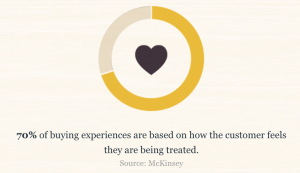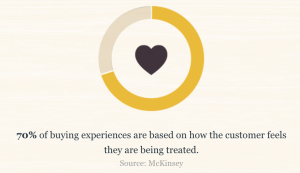Call Sales: +1 (833) 437-3835
Call Sales: +1 (833) 437-3835
Revel | December 31, 2016 |

Customer service has been a pillar of good business practices since the motto “The Customer Is Always Right” was popularized in the early 20th century. Titans in the industry have long championed this concept, whereas brands like Nordstrom and Apple have become synonymous with the catch-all phrase. But recently, there has been a shift in the industry where promises of “superior customer service” have been replaced by “superior customer experience,” so much so that the term has become ubiquitous.
So then, what’s the difference between the two?
Customer service is simply defined as the assistance provided by a business to its customers. It is used to address a specific touchpoint that has been initiated by the customer, making it a reactive approach. It only occurs when there is an issue and the outcome is generally transactional.
According to the Harvard Business Review, customer experience is defined as the sum of all interactions a customer has with a company. Meaning it’s what the customer thinks of the business based on their in-store experience and interactions with the brand outside of the store. It’s a proactive approach with the mission of driving an emotional connection between the customer and business. Customer experience has moved beyond the traditional approach to customer service, now encompassing all offerings including traditional service.
 Data presented with visual
Data presented with visual
A customer experience approach will increase customer satisfaction, loyalty, and advocacy. Investing in the customer’s journey in its entirety yields results. A 2013 study by Avaya and BT Research found that 82% of consumers were spending more with these companies, up from 58% in 2010. Customers care about their experience and are willing to pay for it. How are you prepared to handle the increasing demand for a superior experience? Tracking buying patterns and analyzing customer data with advanced CRM tools can help you anticipate the needs of your customer.
The distinction between customer service and customer experience is more important than ever. Just as shoppers and technology have evolved, so has business's customer service processes. Focusing on the customer journey as opposed to individual interactions is the only way to sustain a competitive advantage.